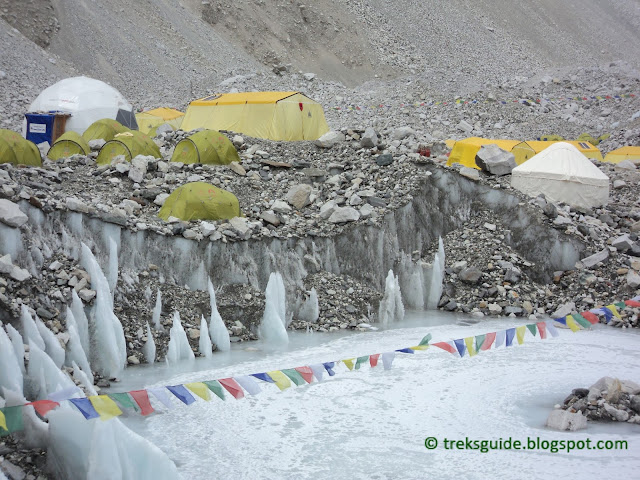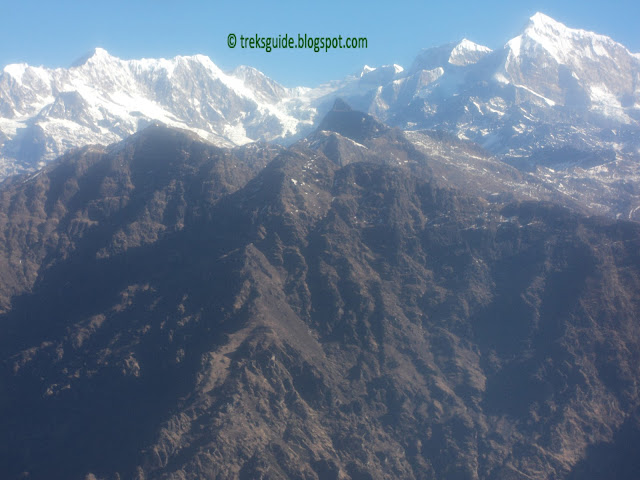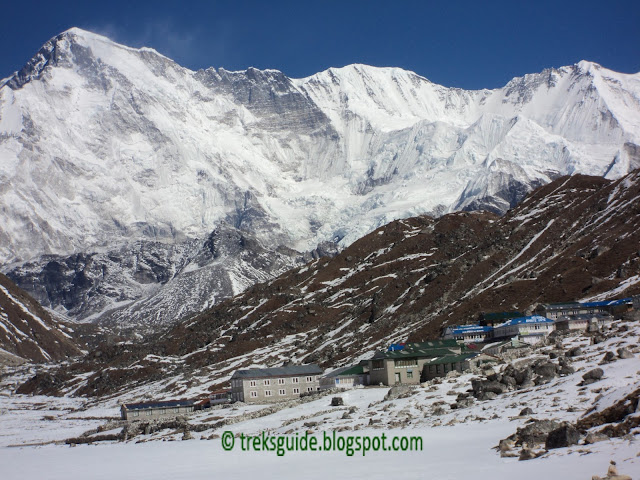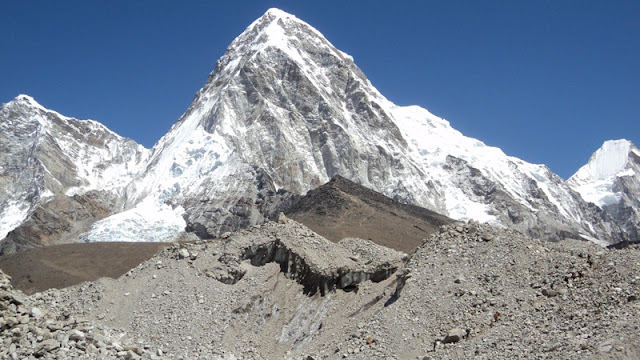Gokyo-Chola Pass-Everest Base Camp Trekking is popular for
panoramic Mountain View including Mt. Everest (8848m.) and Mt. Makalu (8463m.).
This trekking covers the all Everest region. The Trek takes 16 days including
acclimatization day. Gokyo-Ri and kalapathar are the best view point of this
trekking at the height of 5350m and 5545m respectively. We can see Mt. Everest
(8848m.), Mt. Makalu (8463m.), Choyu (8200m.) Kangtega (6685m.) Taboche
(6367m.), Cholatse (6335m.), Amadablam (6856m.), Lhotse (8414m.) Lobuche
(6119m.), Nupse (7861m.), Pumo- Ri and other many mountains and small peaks.
The Everest trek starts from Phakding (2840m.) and passes
through Namche Bazaar. Normally trekkers use to go only Gokyo trekking or
Everst Base Camp trekking but some adventureous people want to go Chola pass
trekking. Chola pass trekking covers the both Gokyo trekking and Everst base
Camp trekking including one pass. It takes 15 to 17 days to compleate this
trekking. We can use clock wise route (first Gokyo and then Everest Base Camp)
or anti-clock wise route (first go to Everest Base Camp and then Gokyo). But
the clock wise route is recommended for the trekkers.
Itinerary in Details
Day 01- Fly to Lukla (2804 meters) trek to Phakding (2610 meters) 3 hours. An early morning start takes us to Tribhuwan International Airport in Kathmandu for the 35 minute scenic flight to Lukla at 2804meters. On arrival at the airport guide will brief you and introduce our porters before we begin our trek towards Phakding at 2610meters.
Day 02- Trek to Namche Bazaar (3441 meters) 5.30 hours. We continue trekking along the banks of the Dudh Kosi, crossing this majestic river many times on exciting suspension bridges laden with prayer flags. After entering Sagamartha National Park, the trail climbs steeply with breathtaking views. Namche Bazaar known as the Gateway to Everest which is home to many quality restaurants, hotels, lodges, shops, Money exchange, internet cafe and a bakery. Namche is one of the biggest villages along the whole Everest trail.
Day 03-Namche Bazaar Acclimatization day. We will spend a day here in order to acclimatize and adjust to the thinning of the air. As well as a short trek to a museum celebrating the traditional customs of the Sherpa people to visit. Today we hike up the Syangboche Airport, and around Everest View Hotel. From this point, we can see rewarding views of the Himalayas with a stunning sunrise or sunset over the panorama of the Khumbu peaks.
Day 04- Trek to Phorste Thanga (3680meters) 5 hours. Today, the trail climbs steeply out of valley through rhododendron forest, juniper and large conifers start to appear as the elevation increases making the trekking beautiful in spring. The trail passes through Yak Kharkas and summer settlements. The views of Khumbi La and Tawache are magnificent throughout the day.
Day 05-Trek to Machherma (4470 meters). 5 hours. The trail climbs a ridge for an excellent view both down the valley to Kengtega and up towards Cho Oyu and descend to a river and again climbs steep to the terminal moraine of the Ngozumpz glacier. We will reach at Machherma by early noon.
Day 06-Trek to Gokyo (4790 meters) 5.30 hours. Today the trek takes us at one of our final destination, Gokyo (4790m). We will make this camp our base for 2 nights as we will have a day of sightseeing and hiking trip around Gokyo.
Day 07-Trek Gokyo Ri (5483 meters) and then Back to Gokyo. 5 hours. Today, early in the morning we have steep climb up to the top of Gokyo Ri at elevation of 5483 meters, ample rewards to one attempts this trip. There are stunning views of the supper Gokyo valley, the massive Ngozumpa Glacier and an incredible panoramic view of the whole Khumbu Himalayas, such as giants as Everest, Lhotse, Nuptse, Makalu, Cho-Oyu and Gychung Kang can be seen. Those who explore the glacier and Gokyo peak are rewarded. This day we have for acclimatization and after noon back to the camp.
Day 08-Trek to Thangna (4500 meters) 4 hours. Trekking to the foot of Cho La pass.
Day09- Cross Cho La pass (5300 meters) then trek to Dzongla (4710 meters) 7 hours. Today is a long trek starting before sunrise at 4/5 am to reach the pass by 9-10 am otherwise weather conditions will greatly affect our journey. We cross over at an altitude of 5300 meters we could be exposed to strong winds if crossing too late. We start to climb steeply that is regularly used and easy to follow. However, the problem may arise due to the altitude and snow. It often causes terrible problems to cross the pass if it is covered by snow. As you reach the top, you are rewarded by the magnificent views, then we descend to the Dzongla at noon.
Day 10-Trek to Lobuche (4910 meters). 4 hours. Today, we will take easy and short trekking route as we had big and hard trekking day yesterday.
Day 11- Trek to Everest Base Camp (5365 meters) then trek back to Gorak Shep (5180 meters). 7 hours. After an early morning start leaving Loubuche, we head up to Everest Base camp (5365meters) you will have unobstructed views of many mountain giants like Nuptse, Pumori, Chagatse and Lhotse looming directly ahead and on all sides. Then we make our return to Ghorakshep at elevation of 5180 meters at noon for our overnight stay.
Day 12- Trek to Kalapattar (5555 meters) then trek down to Pheriche (4200 meters) 6 hours. After reaching Base camp of Everest our aim today is to trek Kalapattar (5555meters). We start early to reach the viewpoint that offers some of the best views of Mount Everest as well as other panoramas of the surrounding mountains. We then descend to Pheriche at elevation of 4200 meters.
Day 13- Trek to Namche Bazaar (3441 meters) 5.30 hours. Leaving the mountains behind us our descent takes us through Tengboche Monastery at elevation of 3860 meters before continuing back to the town of Namche Bazaar at 3441meters. We arrive back into Namche Bazaar in the afternoon.
Day 14- Trek to Lukla (3404 meters) 6 hours.
Finally we return to Lukla where the trek began, which seems a lifetime ago. Enjoying time to reflect on the trek as a group and the personal achievement of all those who took part.
Day 15-Morning flight to Kathmandu from Lukla.
Enjoying your last glimpse of the mountains you have recently visited for one last time on the 35 minute Scenic flight back to Kathmandu.






























